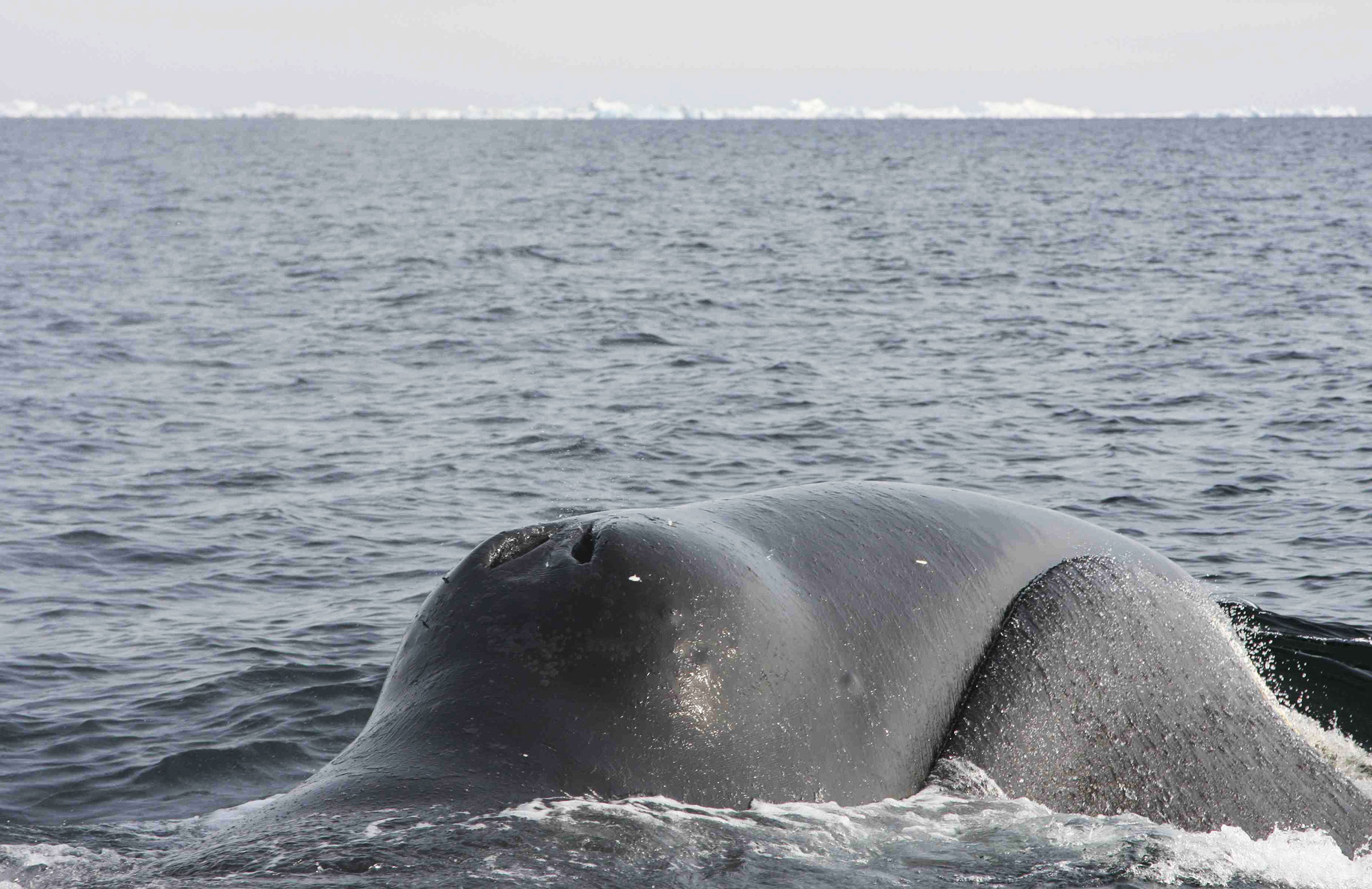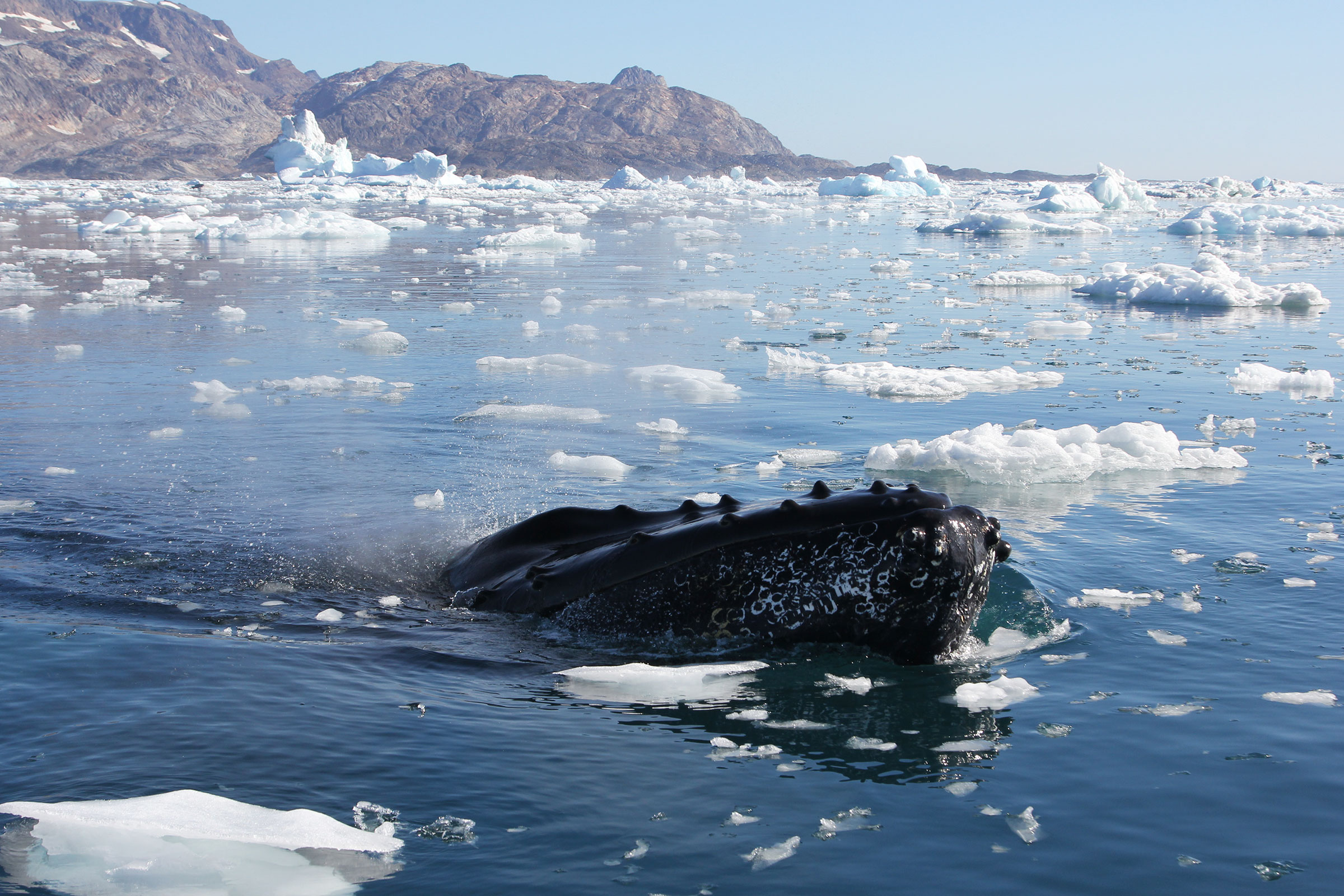Large whale foraging ecology
The primary goal of this work is to quantify and contrast the foraging strategies of large baleen whale species in West Greenland. We use a multidisciplinary approach by combining observations of movements, foraging ecology and phenology collected by satellite and archival telemetry with intensive and localized in-situ sampling of ocean conditions and prey availability, as well as satellite imagery. Baseline trophic relationships are quantified using spatial and bioenergetic models. This work primarily focuses on bowhead whales (Balaena mysticetus) and humpback whales (Megaptera novaeangliae), but may also include fin whales (Balaenoptera physalus) and minke whales (Balaenoptera acutorostrata). The simplicity of the food chain in Arctic systems offers unique opportunities to gain insight into predator-prey dynamics also relevant to more complex ecosystems. This work has been funded by the National Ocean Partnership Program (NOPP), the Greenland Climate Center, the Greenland Institute of Natural Resources, Carlsberg Foundation, and the Danish Cooperation for the Environment in the Arctic.



